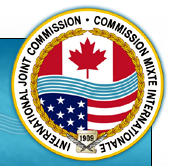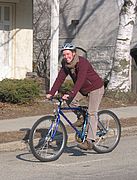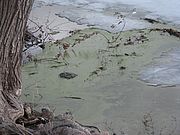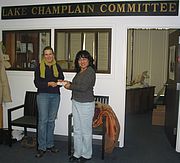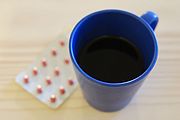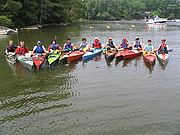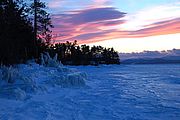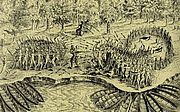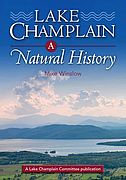One hundred years ago, the world’s first international environmental agreement was signed between the United States and Canada – the Boundary Waters Treaty of 1909. This agreement created a body, the International Joint Commission (IJC) to mediate disputes over waters that crossed between the two countries. At the time, water diversion projects in North Dakota and Alberta along the St. Mary’s and Milk Rivers were creating tensions. There was also debate about potential hydroelectric generation along the Niagara River, shared by New York and Ontario. Most of the IJC’s work revolves around the Great Lakes. However, since Lake Champlain shares a border between Quebec and both New York and Vermont, it too is under the jurisdiction of the IJC. In their century long history the IJC has been called on to address Lake Champlain issues at least four times. Read...
News from Selected Month
Help us reduce 500,000 pounds of greenhouse gases in just one week! Way to Go Week is an annual program promoting the use of cheaper, healthier, more earth-friendly alternatives to driving alone. You can help make a difference in our air and water quality by walking, biking, carpooling, telecommuting or taking the bus. Do it for one day, a few days or the whole week. Sign up online at www.waytogovt.org. The website contains lots of useful information on reducing the environmental impact of driving. LCC Office Manager Jeanne Stark is one of the "commuter idols" highlighted on the website for getting around in a low-impact way.
Whether you live in the Lake Champlain Basin year- round or just visit here occasionally, we hope you'll join in the event. You can register online and get your pollution, gas and money savings calculated, receive free giveaways and be entered in a drawing for premier prizes including Ipod Nanos, Burton snowboards, battery-powered mowers, bus passes, and gift certificates!
Algae blooms are usually considered a thing of summer, but some algae populations will grow while still under the ice. So long as light is able to penetrate the snow and ice over the lake, algae can take advantage of it. The group of algae best suited to take advantage of the under-ice environment is the diatoms, species encased in beautiful microscopic silica shells. Nuisance summer blooms of blue-green algae are still months away. Read...
At a time when budgets are tightening throughout the country, University of Vermont students are generating revenue for local causes while getting a trial run at becoming an entrepreneur. Read...
On February 12th, the US Geological Survey publicly released a report on the presence of a variety of man-made chemicals in the streams and wastewater that discharge into Lake Champlain. The chemicals found include pesticides, fire retardants, fragrances, detergent degradates, and caffeine. Read...
What was travel writer Peter Greenberg thinking in calling Lake Champlain a "must miss" destination? Read...
The most recent issue includes information on forage fish declines, South Lake initiatives, how Burlington is dealing with stormwater, pending legislation on paddling fees, and more. Read...
In 1609, four hundred years ago, Samuel de Champlain first set his eyes upon the lake to which he later assigned his name. Some of what he saw remains unchanged, some is completely different, and some of what he thought he saw he did not actually see. Read...
LCC's new book called "Lake Champlain: A Natural History" was recently published to coincide with Lake Champlain's Quadricentennial celebration. The book will expand the knowledge and appreciation of anyone who visits, works, or plays around the lake. Read...

